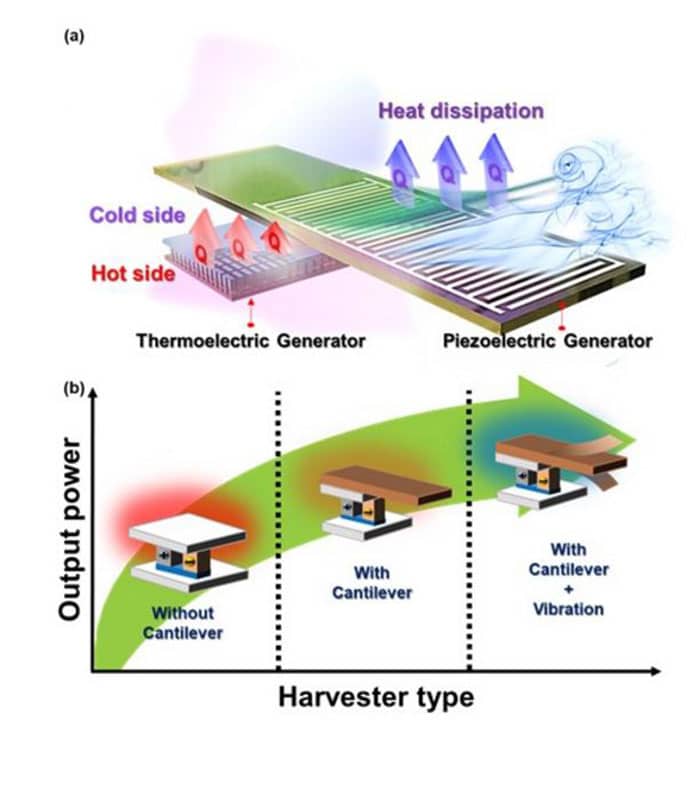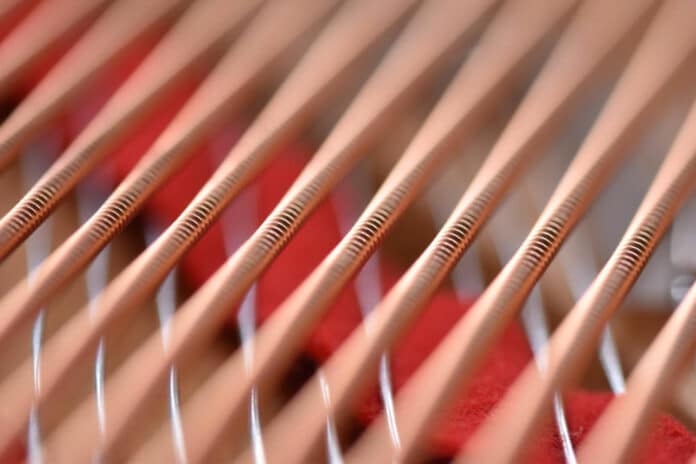Energy harvesting involves extracting energy from sources like heat, vibration, light, and electromagnetic waves in everyday environments like industrial sites and automobiles and converting it into electrical energy. This technique is especially useful for powering IoT sensors and wireless devices that are located in environments where battery replacement is difficult.
Dr. Hyun-Cheol Song and Dr. Sunghoon Hur from the Korea Institute of Science and Technology have developed a hybrid energy harvesting system that combines thermoelectric and piezoelectric effects to increase power production by over 50%.
The thermoelectric effect converts thermal energy from both ends of the device into electrical energy, but it has a low energy conversion efficiency. The piezoelectric effect converts mechanical vibration into electrical energy and has a high impedance, making it unreliable to harvest energy.
Hybrid energy harvesters have been proposed in the past to overcome the limitations of single-mode energy harvesters. However, they have mainly focused on simply combining the energy generated by each mechanism.
The KIST research team has taken things a step further by developing a thermoelectric-piezoelectric hybrid energy harvester that complements the shortcomings of thermoelectric and piezoelectric devices to create a synergistic effect in environments with heat sources and vibrations.
They improved the heat dissipation effect in a vibration environment by fabricating a cantilever instead of a heat sink, which is a static shape with a large cross-sectional area that is bulky and in contact with air. This resulted in a thermoelectric device output that was improved by more than 25%.

Additionally, the research team proposed a hybrid energy harvesting structure that attached a polymer-type piezoelectric device to the cantilever. This generates additional power by generating tensile and compressive deformation of the piezoelectric device as the cantilever shakes. They successfully applied this hybrid energy harvester to drive a commercial IoT sensor stably, demonstrating the potential for future IoT sensors to run continuously without a battery power supply.
“This study confirms that the hybrid energy harvesting system can be reliably applied to our real life,” said Dr. Sunghoon Hur of KIST, who led the research in a statement. “We have confirmed its effectiveness in places where heat and vibration exist together, such as automobile engines, and are currently planning to build a system that can be applied to factory facilities or construction machinery engines that are difficult to supply power and diagnose their condition wirelessly.”
